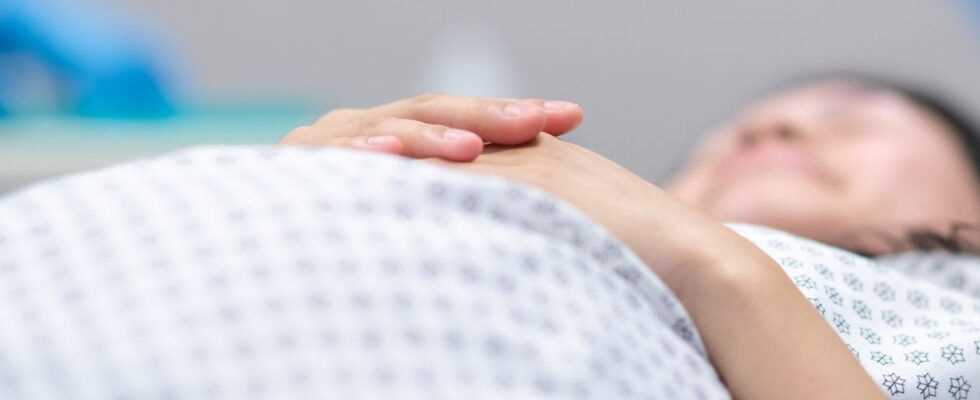During pregnancy, the pregnant woman may face complications. This is called a pathological pregnancy (also called a risk pregnancy). Medical care, postnatal and prenatal leave … We take stock.
During pregnancy, the pregnant woman may face complications. This is called a pathological pregnancy (also called a risk pregnancy). Medical care, postnatal and prenatal leave … We take stock.
In France, each year, two pregnancies in ten are pathological. This means that 20% of women experience one or more complications during the nine months of gestation. Pathological pregnancies, more commonly known as high-risk pregnancies, can have consequences for the child and the mother-to-be, but also on the course of childbirth. In some more severe cases, they can lead to hospitalization and sick leave for a period of time.
What are the causes ?
All future mothers can be affected by a pathological pregnancy. However, they are more common in women who often have health problems or have had complications from previous pregnancies.
Age is a factor in pathological pregnancy. Indeed, in general, it is considered that after 35 years, a pregnancy is more at risk than a pregnancy at 25-30 years. According to the French National College of Gynecologists and Obstetricians (CNGOF), late pregnancy increases the risk of gestational diabetes, high blood pressure, pre-eclampsia and premature birth.
Multiple pregnancies are often considered high risk pregnancies. They sometimes require medical follow-up and special care. In particular, there is a higher risk of preterm delivery.
Overweight (obesity), tobacco and / or alcohol consumption, drug addiction or pre-existing hypertension can also be factors in high-risk pregnancies.
What are pathological pregnancies?
A pregnancy can become "at risk" when it first appears:
- Gestational diabetes: This is one of the complications of high risk pregnancies and often occurs towards the end of the second trimester of pregnancy. It can lead to preeclampsia or premature delivery. Diabetes can also affect the infant if it is not detected in time. For example, it can lead to macrosomia (birth of a baby weighing over 4kg). Diabetes usually stops after pregnancy but can come back during a second pregnancy.
- High blood pressure of pregnancy: it occurs during the third trimester of pregnancy and can cause preeclampsia. Eclampsia is a vital and major emergency for pregnant women and their unborn babies.
- From an infectious disease (urinary tract infection, toxoplasmosis, listeriosis, etc.). They are generally detected during medical monitoring related to pregnancy. Support will then be necessary for the future mother.
- A threat of premature delivery (such as, for example, during premature rupture of the water bag or during strapping).
- Retro-placental hematoma: This is a hematoma that separates the placenta from the uterus and is common in high blood pressure. Its consequences are quite serious for both mother and child since there is a risk of bleeding.
As soon as a pregnancy becomes pathological, it will require special and increased medical monitoring. Some pregnant women are also referred to zone 3 maternity hospitals for their delivery, as they are empowered to take care of them in the event of a severe complication. They notably have a neonatal intensive care unit.
The consequences on the baby can be quite serious: premature birth, intrauterine growth retardation leading to disease or impairment, death in utero.
Two possible pathological leaves: one prenatal and one postnatal
In the event of a risky pregnancy, the doctor may offer the expectant mother a prenatal pathological leave. This is a 14-day sick leave in addition to the maternity leave prescribed by the doctor. Please note, it must be taken before the start of maternity leave. Daily allowances are equivalent to those paid by social security during maternity leave.
A mother can also benefit from postnatal pathological leave for reasons related to childbirth or the health of the newborn and depending on the mother's condition. This postnatal leave must be taken at the end of the maternity leave and its duration may not exceed 4 consecutive weeks. Daily allowances correspond to those for sick leave and are paid by health insurance.
Read also:
Ectopic pregnancy, symptoms and treatments
The 10 commandments for successful pregnancy photos like a pro!
